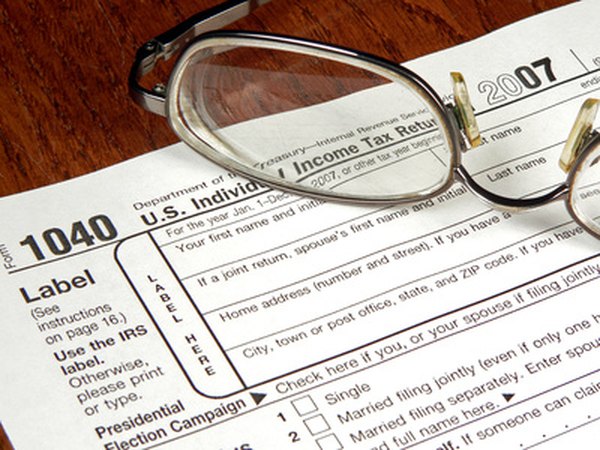How Are RMDs Taxed?
Just because required minimum distributions are mandatory doesn't mean you don't have to pay taxes.
tax forms image by Chad McDermott from Fotolia.com
Required minimum distributions refer to withdrawals from a qualified retirement account that you have to take because of your age. When you take an RMD, you pay taxes on the distribution as you would any other distribution from the retirement account. RMDs are not eligible to be rolled over into another retirement account, so you will pay taxes on them in the year you take them. In addition, the Internal Revenue Service imposes a significant tax penalty if you don't take the required amount.
Pretax Retirement Accounts
RMDs from pretax retirement accounts count as fully taxable income unless you made nondeductible contributions to the account, just like any other distribution. If you made nondeductible contributions, you have to split the distribution based on the percentage of nondeductible contributions in the account. For example, if you have $15,000 of nondeductible contributions in a pretax account worth $100,000 at the time of the distribution, 15 percent of the RMD is tax-free.
Roth Retirement Accounts
Only designated Roth plans require the original account owner to take required minimum distributions. If you are the original owner of a Roth IRA, you don't have to take RMDs. When you take distributions from a Roth account, the money comes out tax-free as long as it is a qualified distribution. To take a qualified distribution from a Roth account, you have to be at least 59 1/2 years old and the account must have been open for at least five tax years. If you don't meet the requirements, you withdraw your contributions first, which come out tax-free. Then, once the contributions are exhausted, you withdraw your earnings, but these are taxable.
Charitable Donation Option for IRAs
Qualified charitable distributions give traditional IRA owners the opportunity to give their required minimum distribution directly to a qualified charity so that they do not have to include the income on their income tax return. To be eligible, you must be at least 70 1/2 years old and must get a receipt from the receiving charity. The donation must be made by the trustee of your IRA directly to the charity; if you receive the money and then you make the donation, you can't exclude the income as a qualified charitable distribution, but you can deduct it just like any other charitable donation. In addition, qualified charitable distributions are limited to $100,000 per year. However, any income you exclude through this distribution cannot also be claimed as part of the charitable donation deduction.
Failure to Withdraw Penalties
If you fail to take your required minimum distribution, the IRS assesses income tax penalties when you file your return. The penalty equals 50 percent of the amount you should have withdrawn. For example, if you should have taken out $30,000, you owe a $15,000 penalty even though you didn't receive any of the money, and even if the distribution would have been tax-free had you taken it. You report the penalty with Form 5329.
References
Resources
Writer Bio
Based in the Kansas City area, Mike specializes in personal finance and business topics. He has been writing since 2009 and has been published by "Quicken," "TurboTax," and "The Motley Fool."

